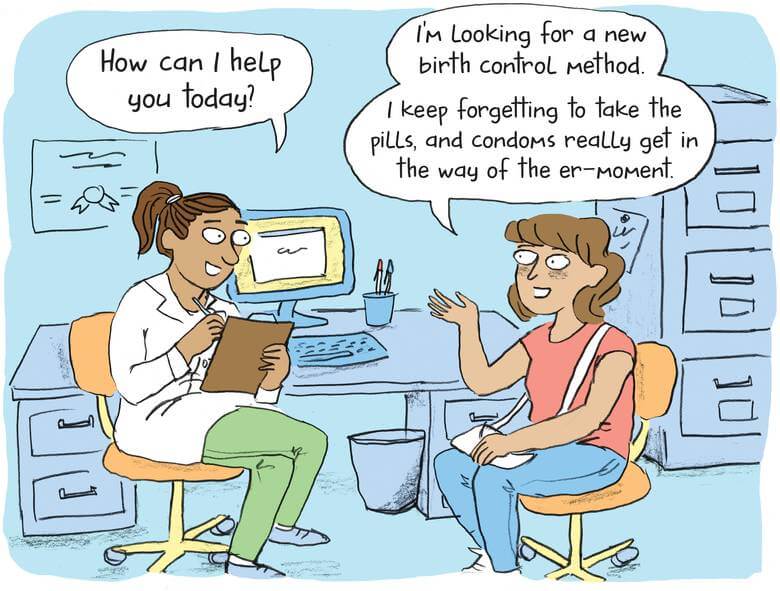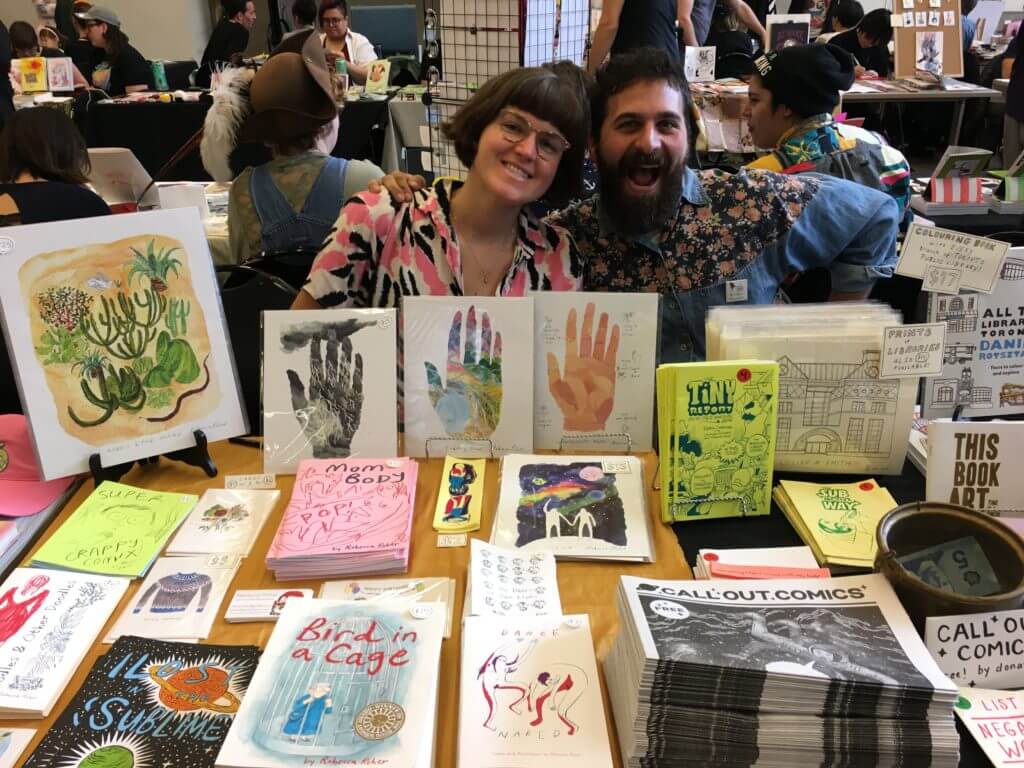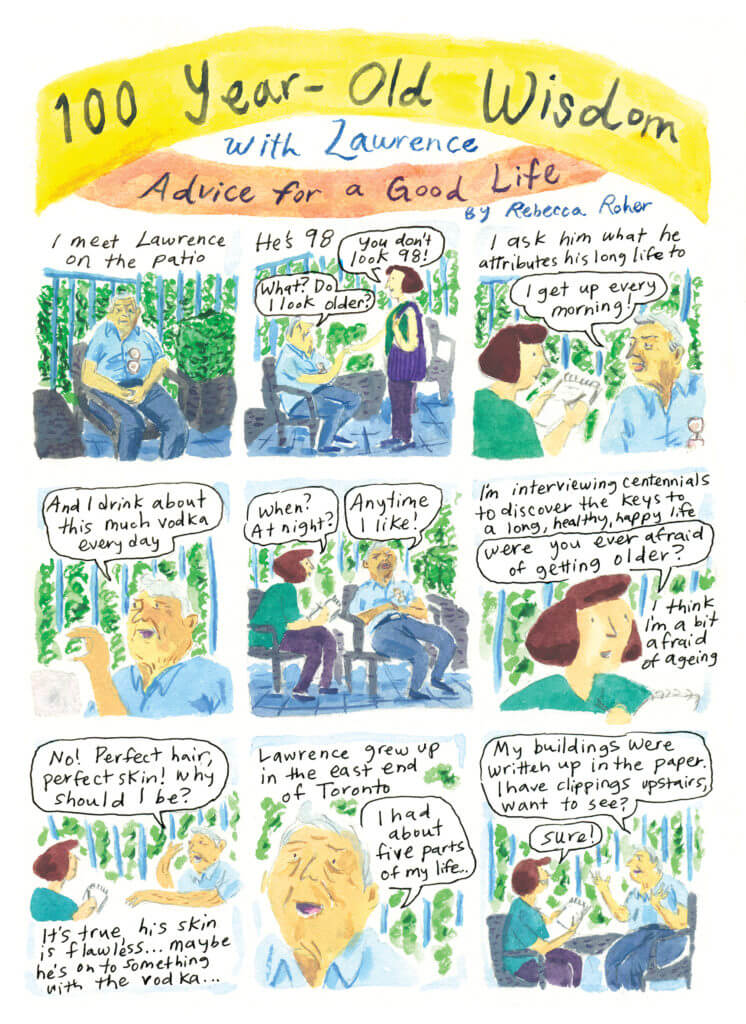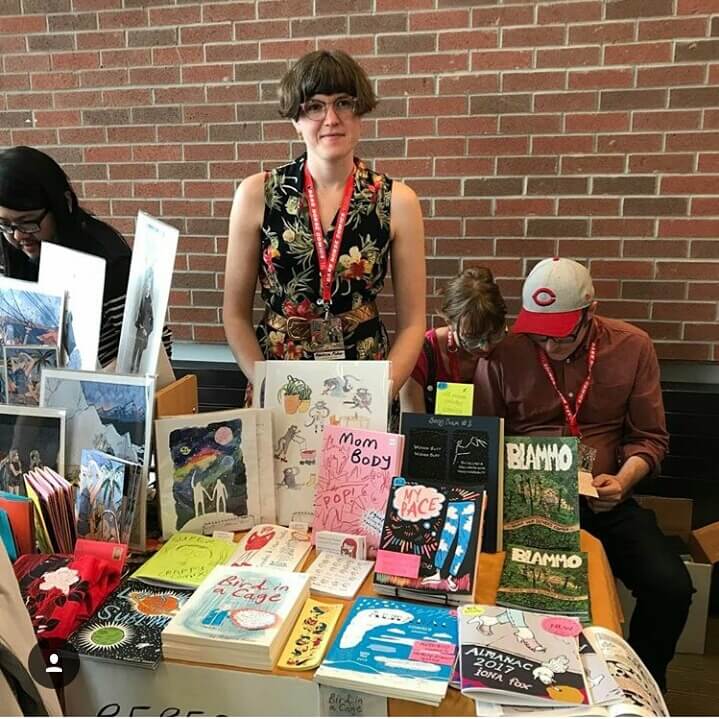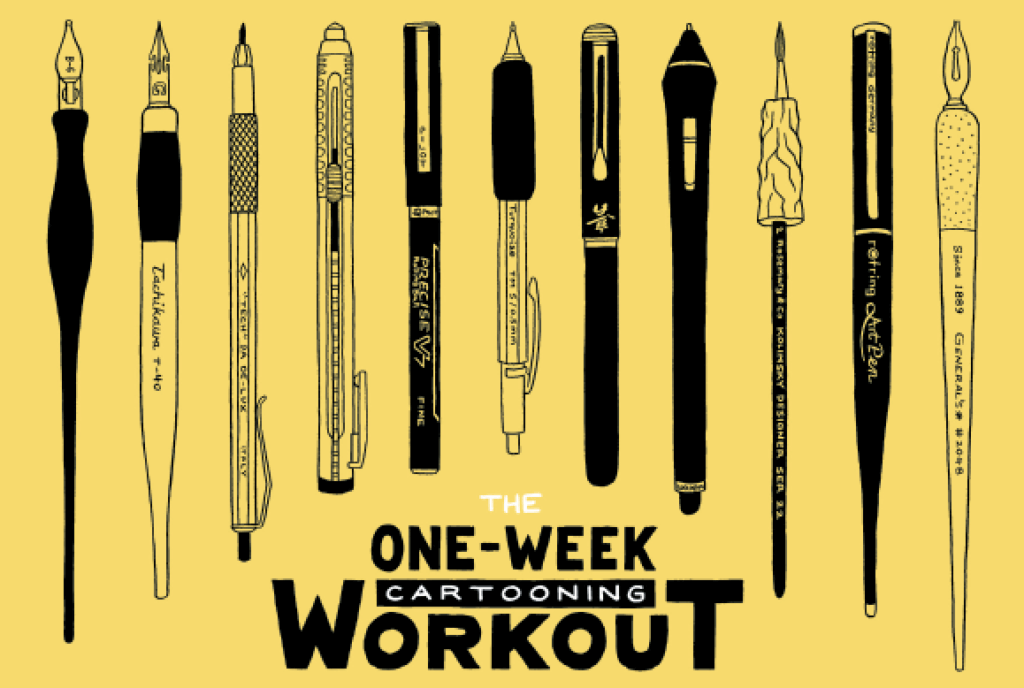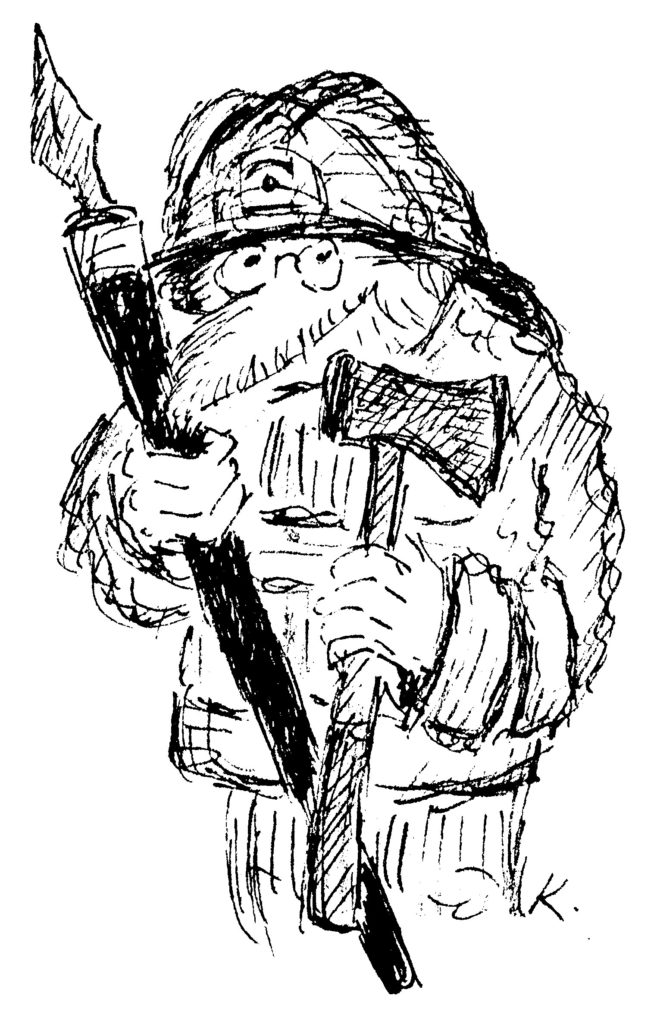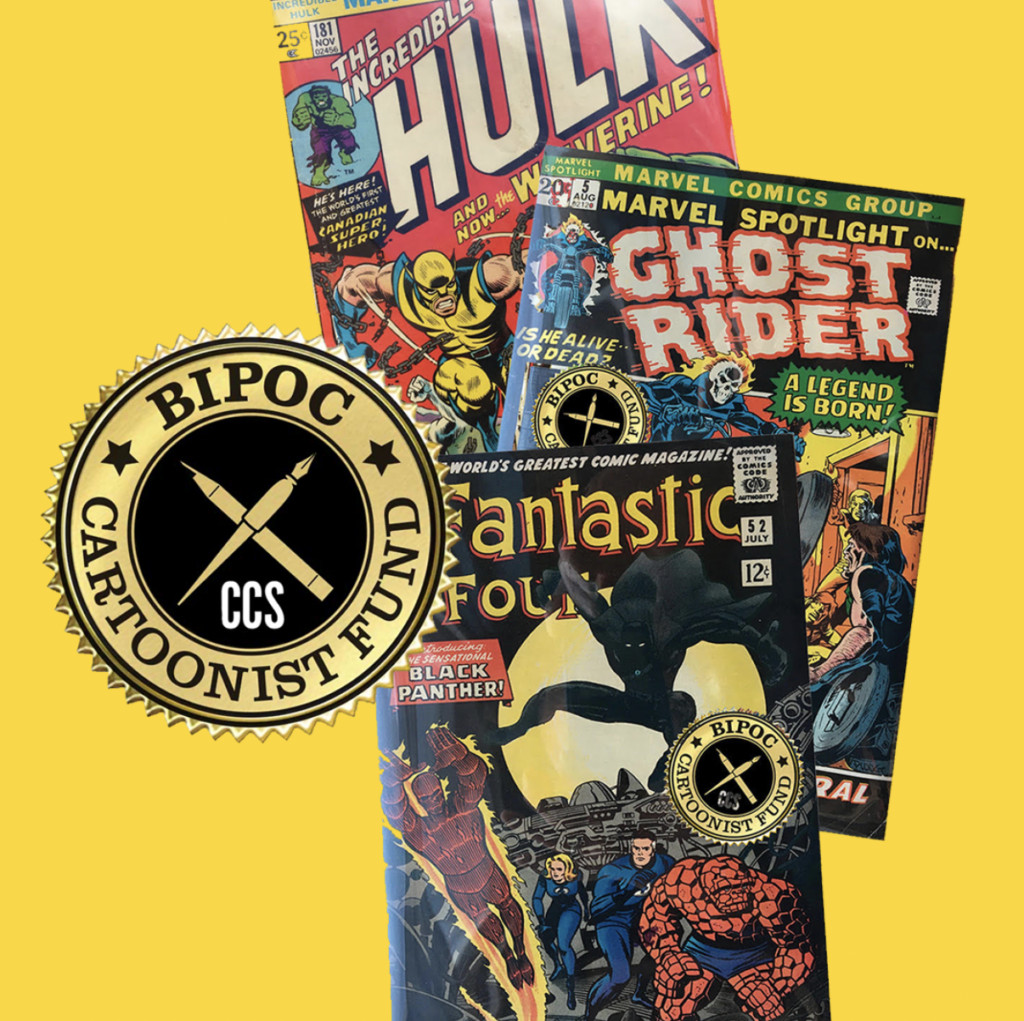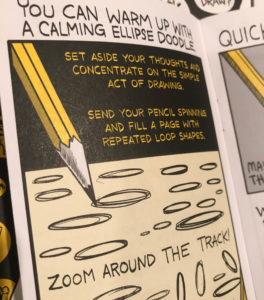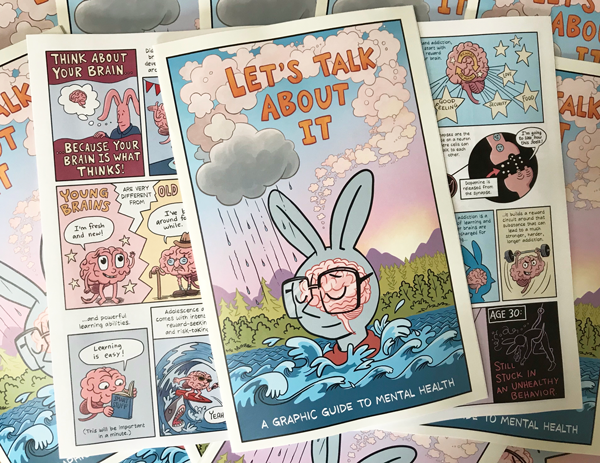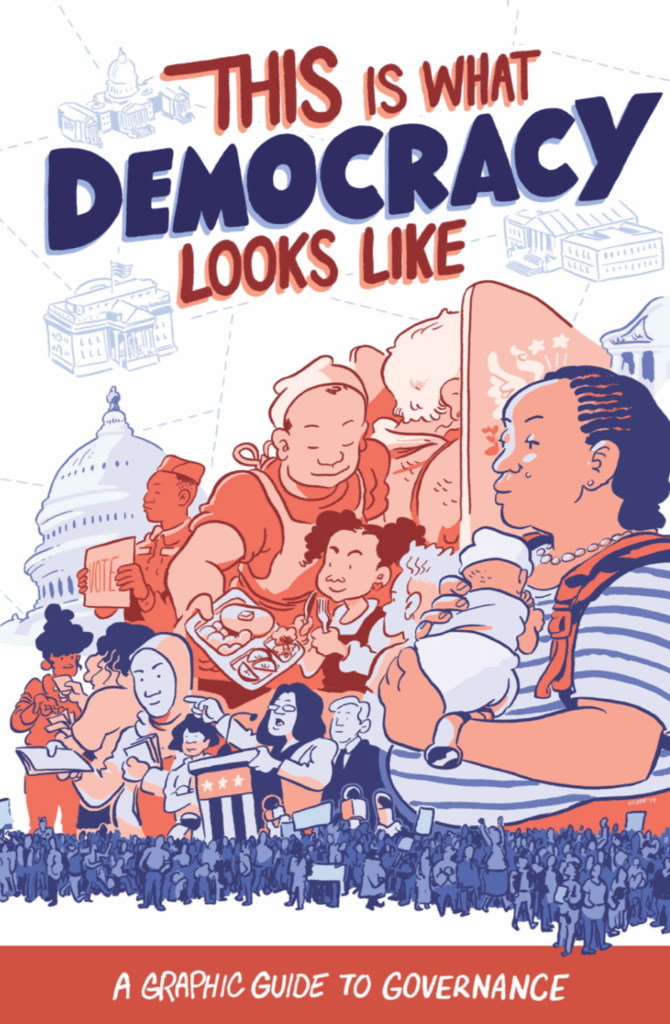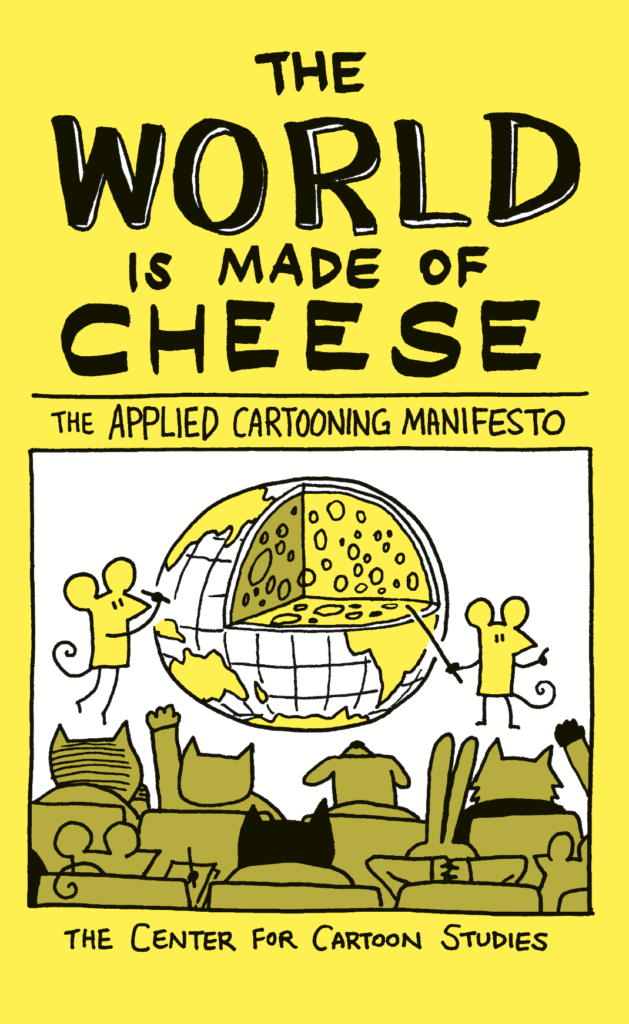November 11, 2018
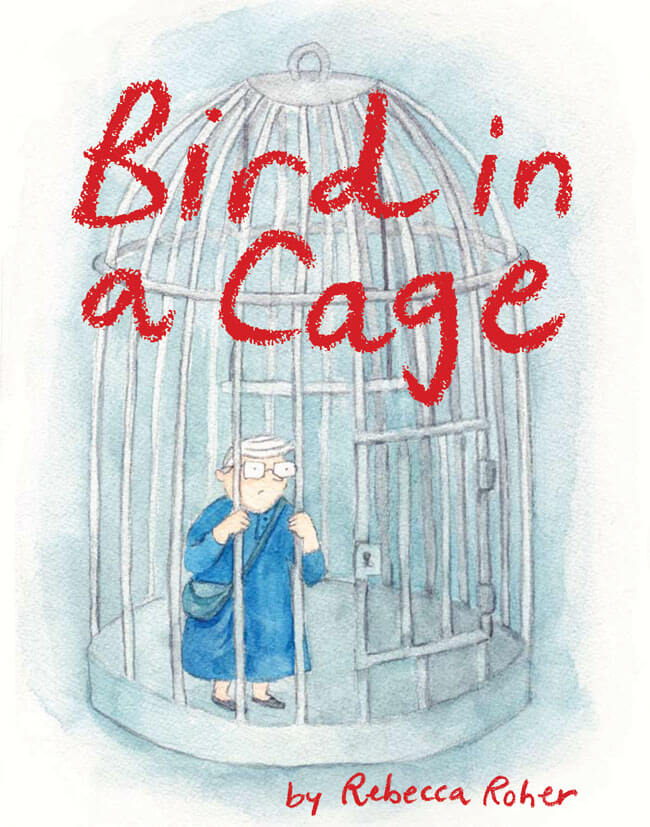
Rebecca Roher ’15 won the Doug Wright Award in Canada for her comic Bird in a Cage (Conundrum Press, 2016), the touching tale of her grandmother after she had an accident that left her with a brain injury, leading to early onset dementia. Rebecca’s most recent project is Birth Control Tales. She collaborated with Dr. Aparna Sridhar, an OBGYN at UCLA, who wanted to create educational apps to explain birth control options visually.
You are working with a subject-matter expert on the four-part Birth Control Tales, and the third installment (“Injection and Combined Horomonal”) is coming soon. How was the process working on educational comics compared to your work on more personal stories like Bird in a Cage and Mom Body?
Working on educational comics has been both different and not that different from writing personal comics. The educational comics feel more like a commercial job, where the medical content is somewhat dry and I need to figure out ways to weave the material into a story and get it to stick in people’s brains. Personal work flows a little easier, like it is already formed and just wants to get out of my brain and on to the page intact. It’s been a neat challenge to find ways to piece together the educational content in Birth Control Tales, and I am extremely enthused about the idea of my comics helping women to become more knowledgeable about their bodies and what is available to them so they can make informed decisions. Now that my work on Birth Control Takes is done, I’m excited to have the time to work on some book ideas that have been percolating.
On Birth Control Tales, what is your process to create comics with a subject matter expert? How has your usual process changed?
With Dr. Sridhar, we agreed on a format and story concept together through Skype calls and emails. She sent me links to content and provided information on the most effective birth control options available in the States, which is what she wanted to highlight. I created stories to include the information she provided, and submitted them in stages for her changes and approval. I first sent her a script, then thumbnails, line art and finally coloured images and moved forward when I got her approval. I drew the art by hand in pencil and coloured it digitally in Photoshop, dropping in the text in InDesign for easy changes and the ability to translate in the future.
The process of having another set of eyes, particularly the eyes of the person who originally envisioned the work, is very different from doing my own work. I will show my own work to others to make sure it makes sense and to get suggestions, but at the end of the day it’s my vision, whereas Birth Control Tales was intended by Dr. Sridhar to relay information to her patients in a visually interesting and effective way. At the end of the day, my ego gets put aside for the goal of the project and the art style is streamlined to reach a wider audience, rather than prioritizing pushing the boundaries of the comics medium and art materials. I like doing both; they have different challenges, and both are satisfying in their own way.
What have the benefits and pitfalls been of working with a subject matter expert?
I love working with experts because I get to learn about what they specialize in and help spread their expertise without having to be an expert on the subject myself. I get to associate myself with amazing organizations like UCLA, Breastfeeding Buddies, and the Child and Nature Alliance of Canada, who are some of my past clients. One of the pitfalls is making the story feel natural and not like a stiff PSA.
Another difficulty can be asserting the value of your work and time. Artists are seen as loving their work, which is (hopefully) generally true, but it is still work. People also don’t realize how long creating work can take. This doesn’t happen often, but it’s upsetting when I am asked to do things for free or for much less than I would value my time and effort. Other difficulties are negotiating the terms of agreements, who owns the work, and how it can be used in the future. These are difficult things to negotiate when a project is created collaboratively and when intentions for the work can change in ways that are unforeseen at the outset. It’s so important to get these agreements in writing.
Most of your comics are non-fiction. Do you enjoy working on fiction?
Non-fiction comes more naturally to me. I started making comics as a way to document my thoughts and memories and to relay important information. I usually get the urge to create when something interesting or emotional happens in real life. True stories often appeal to me more because knowing they are true deepens my relationship to the author and the story. That being said, I appreciate fiction very much and I don’t think it’s any less important. I’m trying to make more fiction work, particularly because making personal work has a lot of pitfalls, like the vulnerability of bearing your heart to strangers and being sensitive to portraying real people. However, even when I make fiction work, it’s always based in some truth.
Do you have plans for your next project after Birth Control Tales?
Yes, and I can’t wait! I have just been accepted for a 7-month residency at Maison des Auteurs in Angouleme, France, where I can dedicate some serious time to new projects. I have three project ideas that have been percolating and for which I’ve done some preliminary work. I haven’t been able to dive in to any of them too deeply because I’ve been teaching a lot and have been busy with commissioned projects, but I will soon have lots of time to work on them once the school year is over this summer and I’m at the residency in November. One project is non-fiction, a collection of short comics based on interviews with 100 year-olds, and the other two are fictional longer-form comics, a suspense thriller set at an artists’ residency, and the other is about a woman’s experience working in the food styling industry. I won’t get into too much more detail, but stay tuned!
Post by Angela Boyle (′16).
Tags: Angoulême, Bird in a cage, Birth Control Tales, Canada, Conundrum Press, Doug Wright Award, La Maison des Auteurs, Mom Body, non-fiction, Rebecca Roher
